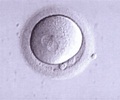Chemotherapy using endoscopic ultrasound (EUS) technique can deliver drug right to the tumour, avoiding damage to normal tissues.
Chemotherapy using endoscopic ultrasound (EUS) technique can deliver drug right to the tumour, avoiding damage to normal tissues.
A flexible gastrointestinal endoscope with a miniature ultrasound transducer (an electronic device) on the tip to guide a small needle directly into a tumor, could prove to be a safer and more effective approach to administering the drug.The investigational research was presented at at the 16th International Symposium of Endoscopic Ultrasonography (EUS2008) in San Francisco, held on Sep.12-13.
EUS combines endoscopy and ultrasound in order to obtain the most accurate, high resolution images and information about the digestive tract and the surrounding tissue and organs. A more advanced form of EUS, called curvilinear EUS, allows doctors to operate within the lumen of the gut while at the same time detect, biopsy and treat lesions and tumors that lie outside the intestinal wall. This technique is particularly useful in patients with pancreatic, esophageal and rectal cancer.
"Curvilinear endosonography will likely become the dominant technology within the field of EUS," said co-chairman of EUS2008, Robert Hawes, Professor of Medicine and Peter Cotton Chair for Endoscopic Innovation at the Medical University of South Carolina. "The potential for accurate diagnosis using ultrasound-guided biopsy, precise staging with high resolution ultrasound images and then the enormous opportunity for new therapies with the curvilinear endoscope is why we are focusing this meeting on the use of this instrument alone."
Used in conjunction with real time imaging, EUS can help physicians to detect blood flow in blood vessels in and around tumors as well as detect and biopsy tumors and lymph nodes as small as 3-5 mm. This allows doctors to avoid puncturing blood vessels when sampling tissue, get the most accurate view of the cancer and know exactly what stage a cancer is in for optimal therapy for treatment. This could save cancer patients with late stage disease from going through unnecessary surgery. EUS may also play a role in the future of minimally invasive surgery (MIS).
Advertisement
GPL












